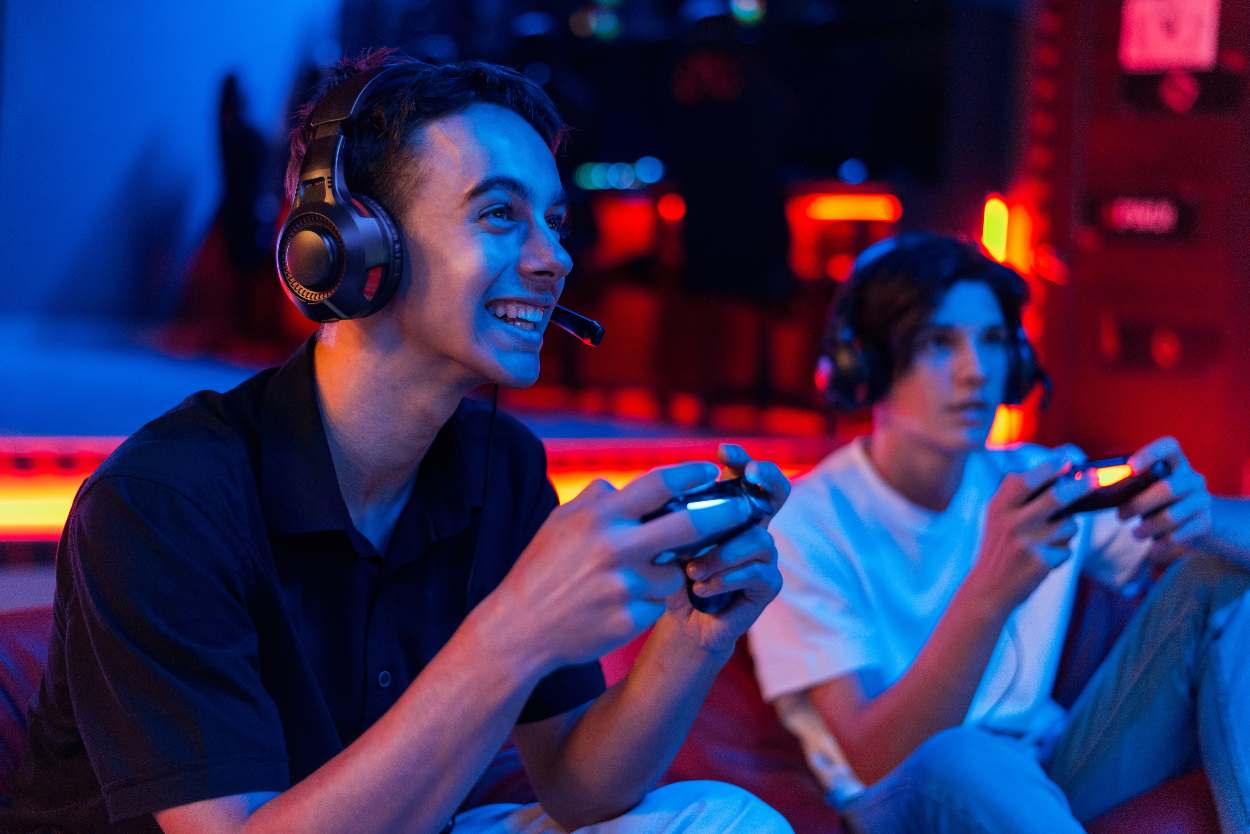The New Era of Competitive Gaming

Competitive gaming has existed since the early days of arcades, when players lined up to beat each other’s high scores. Later, home consoles like the NES allowed friends and families to challenge one another on the couch. Today, that same competitive spirit is alive but looks very different.
Online multiplayer, streaming platforms, and professional eSports have transformed gaming into a global phenomenon. Millions of players aren’t just playing for fun—competing, building careers, and entertaining worldwide audiences.
Here we’ll trace the impact of competition on gaming’s evolution, highlight the rise of eSports, and consider the path that competitive play is carving for the future.
Gaming’s Growth: More Players, More Competition
In 2023, over 3 billion people reported playing games regularly, which is still climbing. One big reason is competitive gaming.
Why More People Are Playing
- Streaming platforms like Twitch and YouTube Gaming, and Game give creators the power to connect with millions of viewers in real time.
- eSports tournaments attract massive audiences, motivating new players.
- Mobile games make competitive play more accessible than ever.
- Indie developers are finding success with creative competitive titles.
| Factor Driving Growth | Example | Impact |
|---|---|---|
| Streaming platforms | Twitch, YouTube Gaming | Games reach millions instantly |
| Professional eSports | League of Legends Worlds, Dota 2 TI | Inspires new competitive players |
| Mobile gaming | PUBG Mobile, Free Fire | Lower entry barrier for competition |
| Indie hits | Balatro, Among Us | Fresh competitive formats for niche audiences |
A New Era of Competition in Game Design
Many modern developers design games with competition at their core. Instead of the traditional single-player campaigns, many modern games now spotlight competitive multiplayer battles.
Examples of Competitive-First Games
- Call of Duty – Shifting focus from story campaigns to online multiplayer battles.
- Fortnite – A battle royale built around competitive survival.
- League of Legends – A MOBA designed from the ground up for eSports.
Not everyone loves this change. Older fans sometimes miss the days of rich single-player campaigns. But developers respond to what most players now want: competition against real people.
The Indie Scene and Player Demand
Indie games often take a different route. Instead of focusing on online play, they sometimes offer unique offline experiences.
Take Balatro, a poker-inspired deckbuilder that made waves in 2024. Players wanted an online mode, but it never launched with one. Within weeks, fans created a multiplayer mod to fill the gap, proving how strong the demand for competition is.
Of course, if you’re serious about poker, it’s smarter to look at the biggest online poker tournament formats, highlighting how the competitive card game market shapes strategies for players worldwide.
This highlights a key point: players often create competition themselves even when games aren’t designed to be competitive.
eSports: The Heart of Modern Competitive Gaming
eSports perfectly captures the spirit of today’s gaming era. What started as grassroots competitions in the 1990s has grown into a billion-dollar global industry.
From Arcades to Arenas
- 1990s – Arcades buzzed with Street Fighters II. tourneys.
- 2000s – StarCraft competitions in South Korea.
- 2010s – MOBAs like LoL and Dota 2 ruled the scene.
- Today – Multi-million dollar arenas, global audiences, and professional gaming careers.
| Era | Example | Impact |
|---|---|---|
| 1990s | Street Fighter II arcade tournaments | Built local communities |
| 2000s | StarCraft in South Korea | Birth of professional eSports |
| 2010s | League of Legends Worlds | eSports go mainstream |
| 2020s | Valorant, Marvel Rivals | New franchises join the global stage |
Marvel Rivals and New MOBAs
It’s not just long-running MOBAs like League of Legends and Dota 2 dominating the space. New contenders are emerging. Based on comic book heroes and villains, Marvel Rivals has gained serious traction. The game’s latest season introduced new features, maps, and alternative costumes, sparking fresh excitement within the community.
How eSports Fuel Gaming’s Popularity
Professional gaming has a ripple effect across the industry.
- Massive audiences – Millions watch tournaments online.
- Influencer power – Pro players stream their matches, teaching fans and attracting new players.
- Sponsorships & brands – Companies invest in teams, making gaming more visible.
- Cultural legitimacy – eSports are now compared to traditional sports like football or basketball.
Some experts suggest that eSports could one day appear in the Olympics, which would bring about a new era of gaming and cement video games as a mainstream competitive sport.
What the Future of Competitive Gaming Looks Like
The future is bright for competitive gaming but it is also evolving fast. Here’s what we can expect:
- More cross-platform play – Breaking barriers between PC, console, and mobile players.
- Greater prize pools – Tournaments with rewards rivaling traditional sports.
- Mainstream acceptance – Schools and universities already offer eSports scholarships.
- Emerging genres – From tactical play to VR, new competitive styles are on the rise.
Final Thoughts
The new era of competitive gaming is more than just fun—it’s a cultural shift. What began as arcade high scores has grown into global tournaments with millions of viewers and professional athletes.
Whether you’re a casual player competing with friends or an aspiring pro, one thing is clear: competition is now the heartbeat of gaming.
